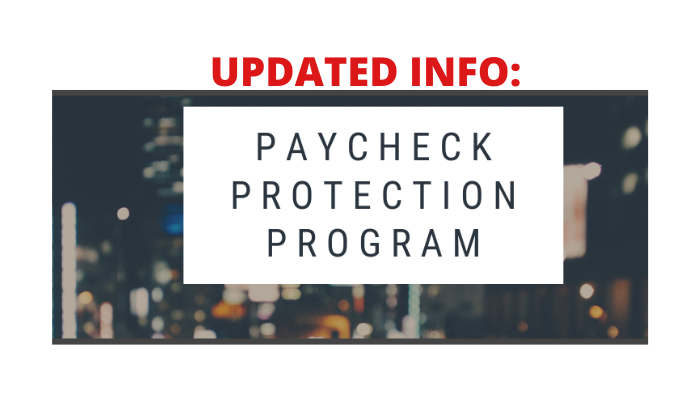As you are probably aware, I’ve been sharing information on the Paycheck Protection Program (PPP) since it’s release in April, and updates as they have occurred. The most recent update is the passage of the Paycheck Protection Flexibility Act H.R. 7010.
The update to the legislation began when the House approved legislation on May 28th extending both the length of the covered period from 8 weeks to 24, as well as loosening the required payroll spending from 75% to 60% of the amount funded.
On June 4th, the Senate voted to approve the bill, and the legislation was sent to President Trump’s desk to sign. Last Friday, June 5, he did so enacting into law the softening of the requirements to help businesses be able to receive forgiveness for the loans they received.
Updates to the Legislation Include:
- Any part of the amount not forgiven was originally to be paid back within two years. The maturity date is now five years.
- The deferral of payment of principal and interest was originally six months. The new bill allows for deferral until the date the bank receives the approved forgiveness amount from the SBA. This can extend the date quite a bit as it could take months for the SBA to let the bank know the amount of the loan to be repaid.
- The covered period has been extended from eight weeks to twenty-four from the origination date or December 31, 2020, whichever comes first.
- The ratio of payroll to approved non-payroll costs changed from 75%/25% to 60%/40%. However, the prior bill had a reduction of forgiveness if the amount spent on payroll was less than 75%. This meant that if you spent 70% on payroll costs, a calculation would be done to reduce the amount of the loan to be forgiven by the percentage not used as defined. However, H.R. 7010 states that if you don’t use at least 60% of the loan amount for payroll costs, none of the loan amount can be forgiven.
- The original deadline of June 30th, 2020, to replace workers has been extended to December 31, 2020. The FTE ratio is used to determine if you lost employees during the covered period that were not replaced. This extension of time allows you a greater opportunity to rehire those who were laid off (or replacing them if they didn’t return) or had lower compensation due to the reduction or closure of your business.
- If your business remains partly or completely closed through the end of the year due to circumstances beyond your control, you will not lose the opportunity to have loan forgiveness. If any of these apply, be sure to document your proof:
- There was an inability to rehire individuals who were employees (they may have refused a return to work offer)
- There was an inability to hire similarly qualified employees for unfilled positions on or before December 31, 2020
- There was an inability to return to the same level of business activity as was operating as of February 15, 2020 due to compliance requirements issued by the Secretary of Health and Human Services, the Centers for Disease Control and Prevention, or the Occupational Safety and Health Administration related to sanitation, social distancing, or customer safety requirements related to COVID-19.
- You can choose to defer the employee portion of employer Social Security tax to pay 50% in 2021 and 50% in 2022 even if your loan is forgiven. The prior legislation disallowed this once the PPP loan was forgiven.
The passage of this legislation is good news, but it still leaves some questions unanswered. We will hopefully see additional clarifications over the next few weeks.
My staff and I are here to help you with the loan forgiveness process when you are ready to apply to your lending institution. Please let us know if you have questions. We can be reached at [email protected] or 310-534-5577. We look forward to assisting you with the loan forgiveness process.
